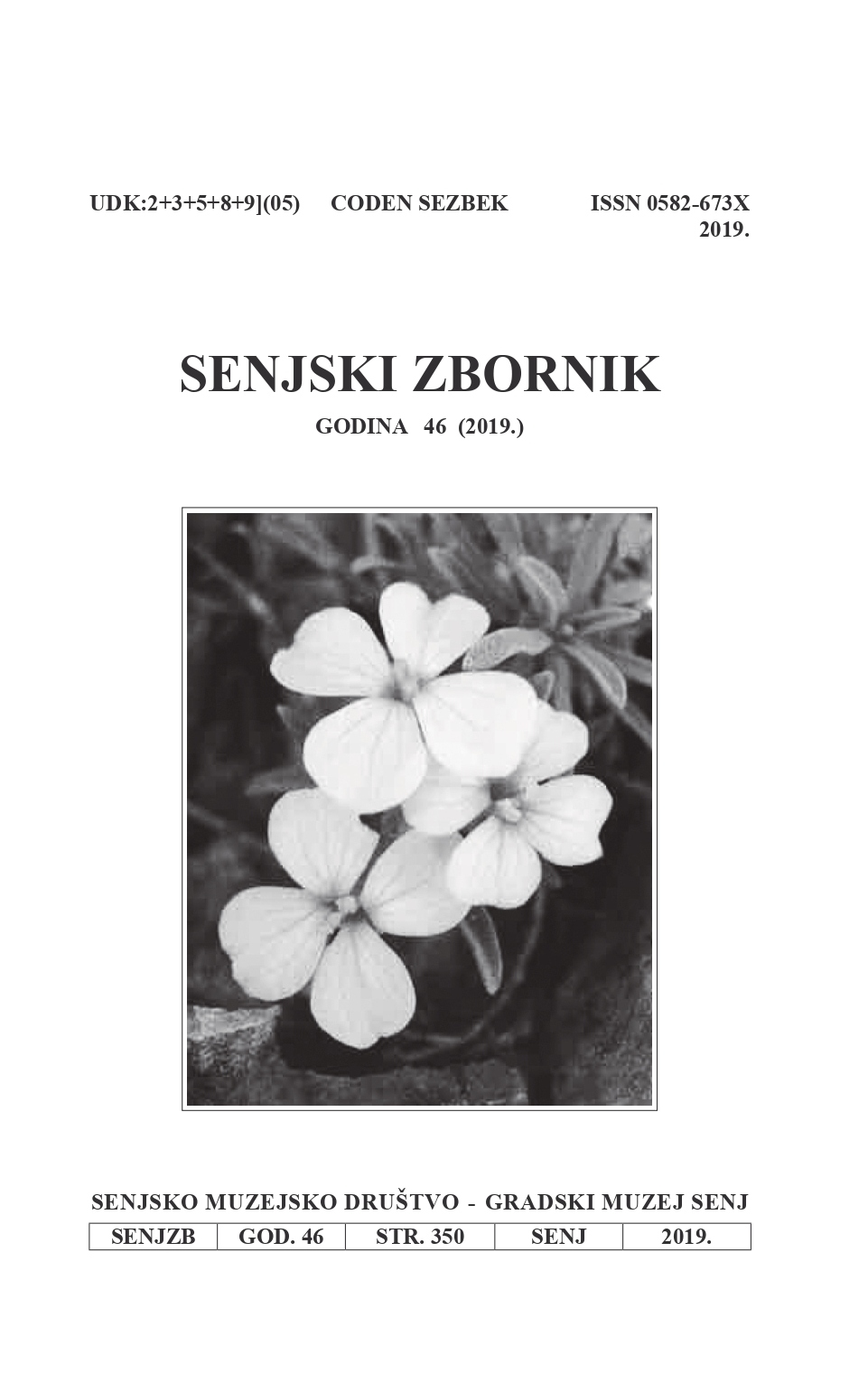Raznolikost i ugroženost travnjaka Nacionalnog parka Sjeverni Velebit
Diversity and Endangerment of the Grasslands of the Northern Velebit National Park
Author(s): Antun Alegro, Vedran ŠegotaSubject(s): Regional Geography
Published by: Senjsko muzejsko društvo i Gradski muzej Senj
Keywords: pastures; succession; transhumance; grazing;
Summary/Abstract: The grasslands of the Northern Velebit National Park are for the most part not a primary type of vegetation, however, they came about as a consequence of human activity by deforestation,burning, grazing and mowing. This process began several millennia ago and has continuously maintained the balance between the forest and grasslands, and it has resulted in a greater biodiversity than what would have been in the untouched natural state. In the second half of the 20th century, traditional seasonal transhumant vertical migrations of people and livestock from Podgorje to the Velebit summer pastures were discontinued as a consequence of the great depopulation of Podgorje, which today is the least populated region in Croatia. Studies of the vegetation of the grasslands within the park during 2009 and 2010 indicated the large diversity of the grasslands which differ from one another depending on the above sea level altitude, relief of the terrain, features of the soil, influence of the wind and the former usage of the land. Succession, in other words, the encroachment of the grassland areas by woody and shrubby species was noted over almost all types of grassland, however, the intensity of the succesion and also the species which grow depend on the type of grassland. Succession is significantly slower on grasslands in the upper zones than on grasslands of the littoral slopes, due to the shorter vegetation period, the harsher climate, the exposure to the strong bura wind and wider grasslands which under hihger succession pressure than the smaller, fragmented grasslands that we come across at the lower altitudes. The conservation of grasslands would have to be a priority for the park’s management, because besides the exceptional biodiversity, the grasslands also tell us about the history of the whole region, the way of life, the economy and the movements, and makes up an essential and immeasurable important part of both the natural and cultural heritage.
Journal: Senjski zbornik - prilozi za geografiju, etnologiju, gospodarstvo, povijest i kulturu
- Issue Year: 46/2019
- Issue No: 1
- Page Range: 61-80
- Page Count: 20
- Language: English, Croatian

